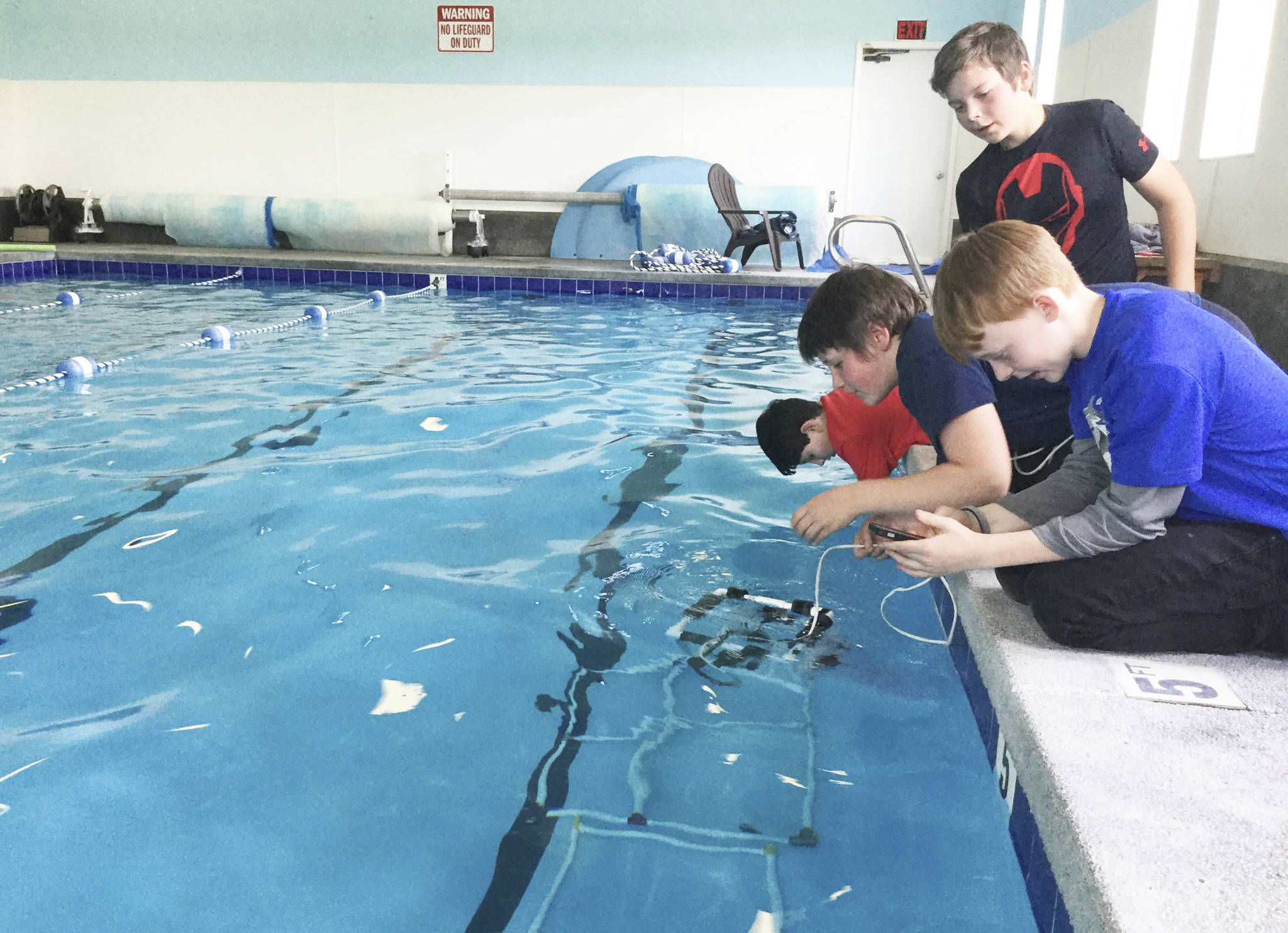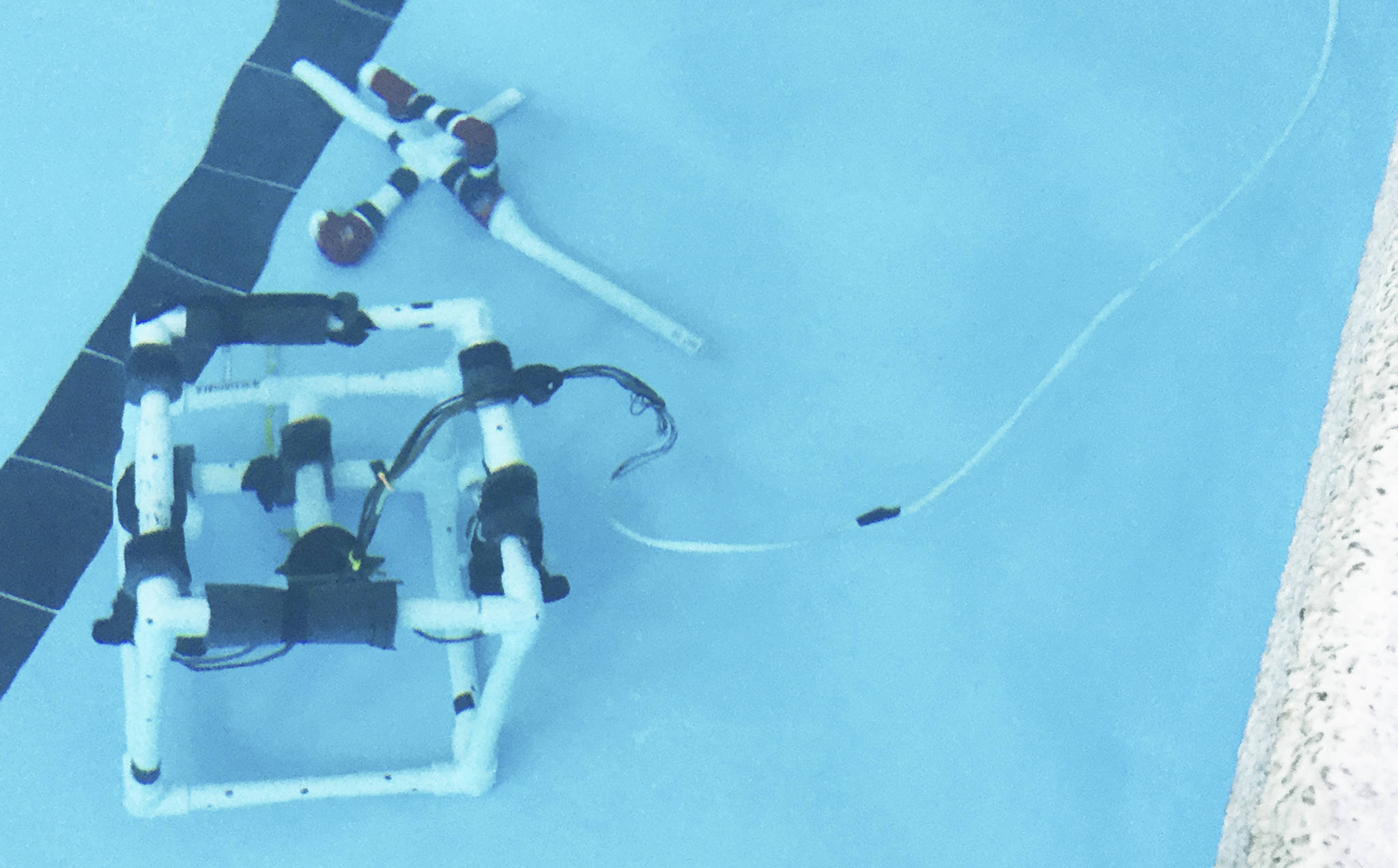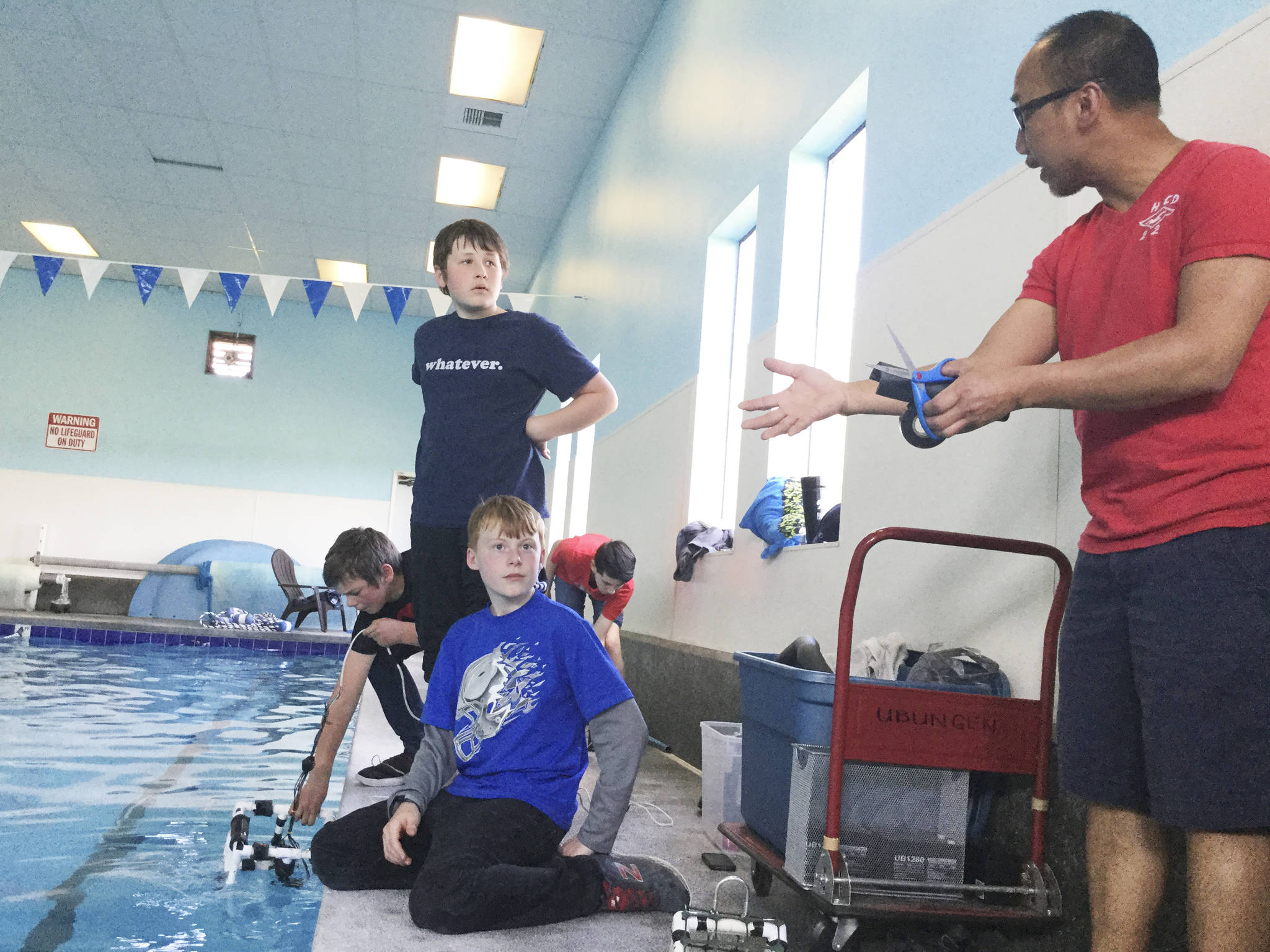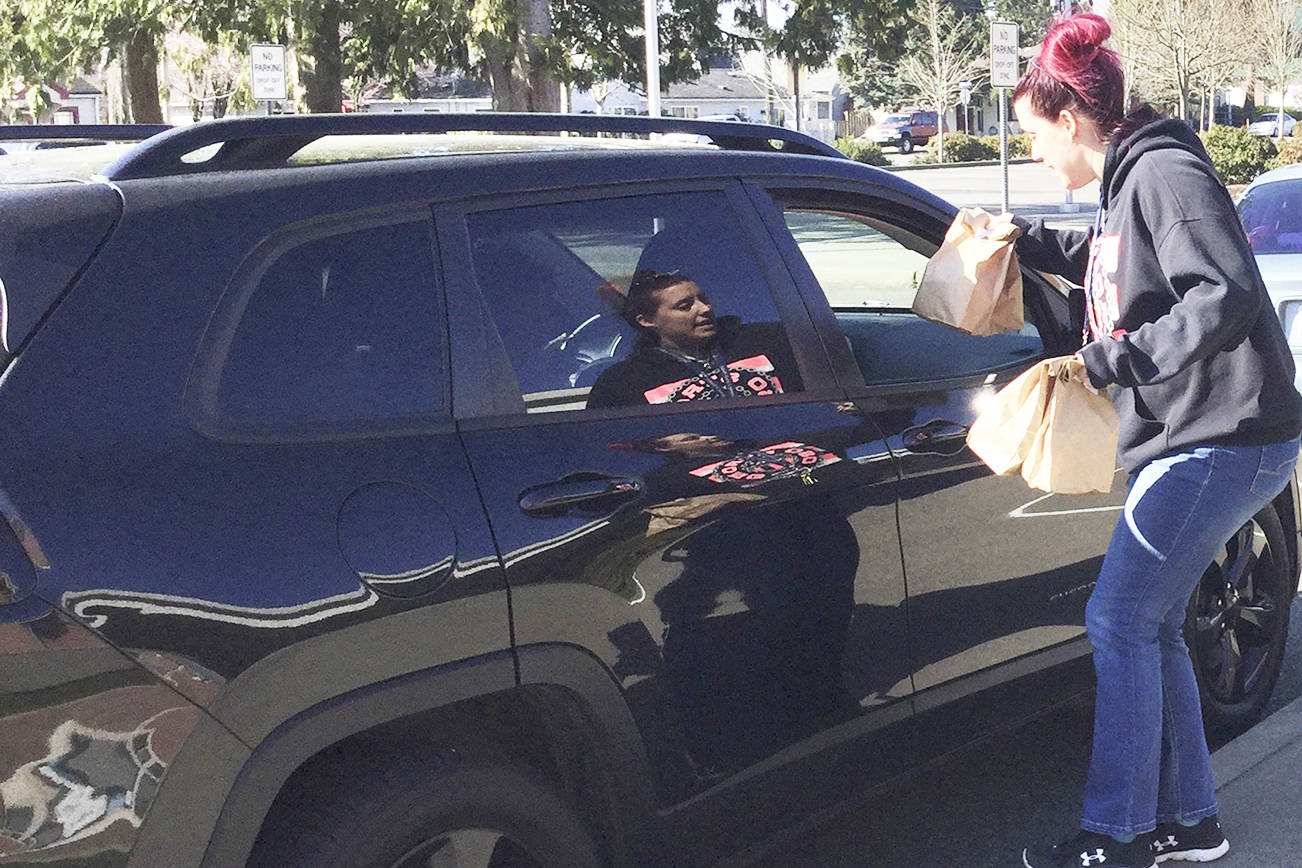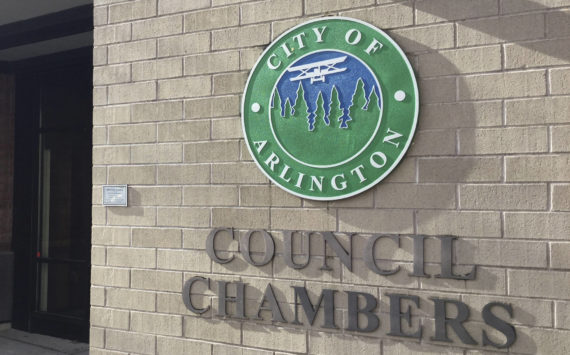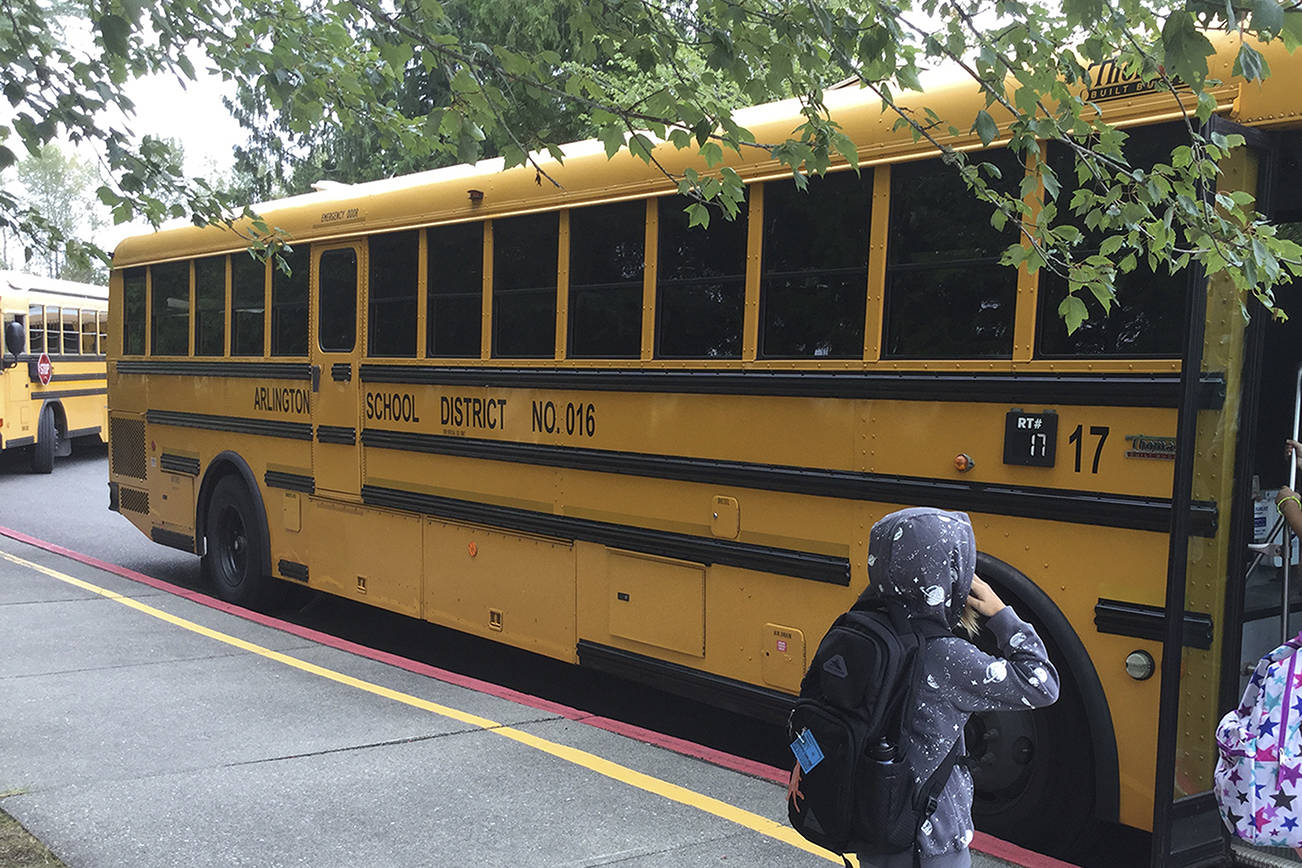ARLINGTON – In the shallow end of the Stillaguamish Athletic Club pool away from swimmers, four boys maneuvered a self-built underwater robot to simulate filling cracks in a dam wall, while their teacher created currents using a long-handled skimmer net.
The makeshift, square-shaped remotely operated vehicle (ROV) may not look like much below or above the surface with its body of PVC pipes, duct tape, propellers and wires connected to a battery-powered controller.
But for the sixth-graders of Haller Middle School’s “Shoot the Rapids” ROV team and their Robotics Club teacher Roel Ubungen they’re hoping that with enough pool testing trial-and-error, the contraption will propel them into the winner’s circle.
The team will compete at the 2019 MATE Pacific Northwest Regional ROV Competition May 11 in the Weyerhaeuser King County Aquatic Center in Federal Way.
The marine robotics industry wants to let young people’s minds run wild dreaming up innovative ways that ROV operations can better protect rivers, lakes and dams.
“The whole idea behind this competition is to do different levels of ROV work underwater, and see what students can do out in the real world, mimicking an ROV, based on real tasks and challenges faced by the marine industry today,” said Ubungen, who teaches sixth and eighth grade science at Haller.
The students found out how to build the ROV as an extra-curricular science project, learning about not only robotics, but also engineering concepts, problem-solving, teamwork and technical applications central to STEM education.
This is the fourth year Haller has sent a team to regionals, Ubungen said. The first year Haller went, they took second among 25 teams.
This year’s group is represented by team captain Josiah Christoffersen, Cameron Bates, Simon Daley, Gavin Dill and Jacob Madriaga.
The team has been ROV testing after school at least once a week at the pool the past few weeks, with Ubungen guiding the boys in underwater exercises that will be awarded points and timed, usually in 10-minute increments.
While the pool depth is 5 feet in Arlington, it will be 9 feet at the competition, Ubungen said.
At the competition, the kids are on their own.
“You guys have to talk to each other, and say ‘do this, don’t do this,’ and talk to the pilot,” he said. “I’ll be up top watching, but I can’t give you advice or they’ll do a warning and kick me out. Parents can’t help either.”
The scenario they’re focused on is guiding their ROV to deliver grout to cap and seal cracks in a dam on a Tennessee river, to keep downriver residents safe. A square of PVC pipe is divided into four sections placed on the pool bottom floor to represent the cracks. The team will be awarded each time they are able to drop grout – represented as a “T” piece, into each of the squares. This is one of three tasks that together need to be done in 10 minutes or under.
The boys are also tasked with remotely placing a red-colored “fry-ball” into a designated square area to simulate restocking a river with fingerlings, while Ubungen rattles a long pool net in the water to create turbulence. A third scenario requires the team to retrieve a damaged trash bin in the dam system that keeps out debris, then repair it.
“That’s all part of preserving the waterways,” Ubungen said.
He said ROVs save lives, too, with automation keeping human workers out of danger when working underwater. He cited the BP oil spill in the Gulf that used ROVs the size of cars to repair, cap and seal a burst pipeline on the sea floor.
Kathy Rodriguez, aquatics director at the athletic club, was only too happy to open the pool for ROV testing. She has a vested interest in continuing this collaboration with the Arlington School District.
Her twin sons Zach and Josh passed through Ubungen’s robotics program at Haller, became NeoBots members at Arlington High School, and have since graduated from college, with Zach earning a degree in Chemical and Biological Engineering from Johns Hopkins University in Baltimore and Zach attaining a dual degree in Neuroscience and Psychology from Washington State University in Pullman.
Gavin’s mom, Christina Dill, said her son has raved about robots.
“He comes home and tells me all about what they’ve been doing, what it’s for, hopefully for a better future and environment,” she said. “He’s just super excited to be involved in something that could help the ecosystem.”
Her select soccer-playing son added, “I like that you can do other things in robotics and try new ideas, and if they don’t work you can always do something different, either by yourself or with the team.”
Dill said Gavin can spend hours building and taking things apart to see what makes them work. He especially likes electronics and motors. His favorite class is science.
Christoffersen said he has always been interested in electronics, has a mind for science, and got a boost when he visited the University of Washington to see one of their underwater ROVs.
“I have a lot of electronic sets; you can just snap together a piece of a circuit, and complete the circuit, so I can make alarms and things like that,” Josiah said. The last item he built was a small robot remote-controlled car that shoots foam disks.
Cameron and Simon got interested in robotics thanks to science fairs and assemblies.
“A guy at a science fair challenged me to develop a solar-powered robot,” Simon said. That got him tinkering and problem solving.
Cameron said guiding the ROV is difficult.
“Mostly because you can’t see,” he said. “It’s underwater, then you have all the waves like at sea. You think you can maneuver through the currents to move in front of the intended target; instead, you land on it.”
Another challenge? Instructions were often left open-ended for teammates to decipher. “We didn’t even know what kind of spray paint we were going to use, but we’re going to paint it to make it look cooler for competition,” Simon said.
Ubungen told the students that in live competition Saturday, they will need to be able to troubleshoot on the spot, and companies and recruiters will be watching how they handle themselves under pressure.
“They’re scouting for young minds, for the ones that can actually think on the spot,” he said.
Demonstrating problem-solving and collaboration are skills that will prepare them for high school robotics and other STEM programs that leads to summer internships, and to college level that will hire them fresh out of school.
